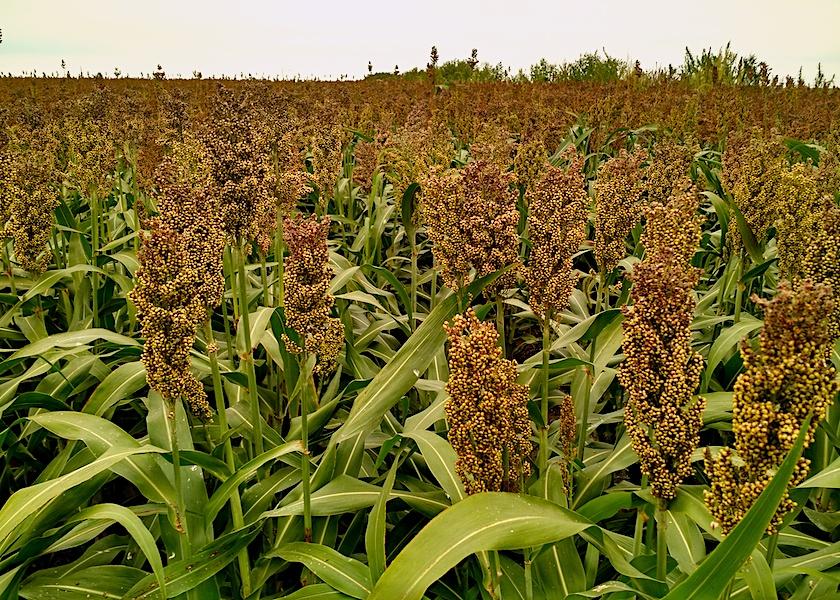The World of Warm Season Annuals: Sorghum, Sudan, Millet, Oh My!

The world of warm season annuals is a new one for many farmers and so is the terminology associated with them. In this article, I will try to define some terms and characteristics of different annuals.
Sorghum, Sudan grass, sorghum X Sudan, and millet. Probably the most common of these three is sorghum. We will be focusing on forage sorghum, but there are lots of acres of grain sorghum [milo] that gets planted every year.
Forage sorghum is generally planted in 15-30-inch rows and treated much like a corn crop. It is a solid forage source in hot/dry climates and the ability to direct cut harvest in a single cut is appealing for some farms. Generally, farms will wait for forage sorghum to go to seed and dry down to an acceptable moisture prior to harvest.
Sudan grass is a leafy warm season annual with good regrowth potential. Most farmers will use it in a multi-cut system. It has a smaller fiber pool than sorghum and so it is more conducive to lactating diets or younger heifer diets. Most farmers cut and wilt it prior to harvesting.
Sorghum X Sudan (SS) is a hybrid of the previous two species. Although they are rarely 50/50 crosses and so there is quite a bit of variability in what they look like. I primarily use SS in my farms across the upper Midwest and northeast. I feel as though the best varieties have a little more vigor and yield potential in multi-cut systems then sudan grass. There are of course varietal exceptions to this but it seems like some sorghum sudan hybrids need less heat to do well than sudan grass.
Millet comes in a number of “nationalities” German, Japanese etc. The main benefits to millet vs. the others are that it is naturally resistant to sugarcane aphids that have devastated the other annuals across the south and it doesn’t have “prussic acid” at frost.
Other Terms to Know
Photo Period Sensitive (PPS): Some sorghum Sudan hybrids are PPS. This means they don’t go reproductive until there is less than a certain amount of daylight each day. This trait is especially valuable if you are taking these for a single cutting because they put all their energy into building forage vs seed.
Brachytic Dwarf (BD): All of the annuals can have this trait. Of BD varieties the growth nodes are compressed. This results in a higher leaf/stem ratio, better standability, and improved regrowth.
Brown Midrib (BMR): The BMR mutation was game changer in the warm season annuals. These annuals were always a great way to grow fiber per acre but the BMR gene greatly improved the digestibly of that fiber and turned these products into things that could even work in lactating diets. For lactating diets, it is imperative to plant BMR products and in heifer diets the BMR gene is usually preferrable unless you are feeding very low inclusion rates.
Aphid Tolerant: Sugar cane aphids have become a real problem from the SE to California and have come as far north as southern Wisconsin. Millet was always tolerant of them but recently some new varieties of sorghum and sorghum x sudan have also been released that handle the pressure well.
Prussic Acid: Is actually Hydrogen Cyanide. It is an odorless gas that is deadly to animals. This is created after a frost as different compounds leak from ruptured cell-walls. The acid volatizes fairly rapidly and so the safest strategy is to never feed newly frozen forage fresh. By waiting for a week or two after frost to feed you can be confident in the safety of the forage.
When choosing what warm season annual it is important to know what animal group you will be feeding it to, what herbicide and pest strategies you will need to employ, and how you will be harvesting and storing the crop. This knowledge will help your warm season annual crop be a success.







